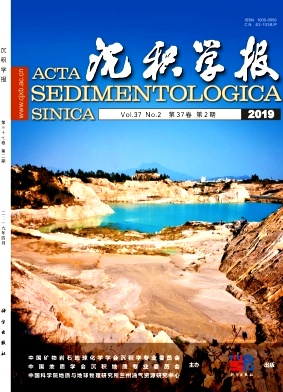Characteristics and a Quantitative Diagenetic Porosity Evolution Mode of Barrier Bar Sandstone Reservoirs: A case study of the Benxi Formation, Yanchang exploration block, Ordos Basin
doi: 10.14027/j.issn.1000-0550.2018.121
- Received Date: 2018-01-25
- Rev Recd Date: 2018-03-27
- Publish Date: 2019-04-10
-
Key words:
- barrier bar sandstone /
- diagenesis /
- porosity evolution /
- Benxi Formation /
- Yanchang exploration block /
- Ordos Basin
Abstract: The Carboniferous Benxi Formation is rich in barrier bar sandstone reservoirs, and is one of the main production layers for tight gas in the Yanchang exploration block, Ordos Basin. To understand the physical properties of the reservoirs and how the porosity evolved, detailed analyses were conducted using thin sections, SEM combined with energy dispersive spectroscopy (EDS), cathodoluminescence (CL) microscopy and other techniques. Also, an integrated approach using an empirical formula for initial sandstone porosity combined with quantitative calculation of porosity enabled porosity evolution modes to be established for the whole geodynamic history of these materials. The results indicate that the reservoir lithology consists predominantly of moderately-to well-sorted quartzarenite, sublitharenite and litharenite. The mean porosity is 4.72% and the permeability is 1.22×10-3 μm2. The reservoirs contain a variety of pore types, mainly dissolved enlarged pores, intraparticle pores and intercrystal pores. Quantitative evaluation of the increase/decrease of porosity caused by different diagenetic conditions reveals that the sandstone (initial average porosity 38.1%) typically underwent four porosity evolution stages:(1) marked porosity loss (-30.7%) in conditions of low geothermal gradient and rapid burial (P1-T2, 285-208 Ma); (2) a slight porosity increase due to dissolution (+3.9%) in conditions of high geothermal gradient and slow burial (T2-J3, 208-153 Ma); (3) a stereotyping stage of the tight sandstone reservoir (-6.6%) in conditions of continuously high geothermal gradient and slow burial (J3-K1, 153-96 Ma); and (4) a weak reworking of the tight sandstone reservoir in conditions of low geothermal gradient and overall uplift characterized by fractures, from the Lower Cretaceous to the present time (K1~, 96 Ma~).
| Citation: | HU Peng, YU XingHe, CHEN HongLiang, ZHAO ChenFan, ZHOU JinSong, HAN XiaoQin, LI YaLong. Characteristics and a Quantitative Diagenetic Porosity Evolution Mode of Barrier Bar Sandstone Reservoirs: A case study of the Benxi Formation, Yanchang exploration block, Ordos Basin[J]. Acta Sedimentologica Sinica, 2019, 37(2): 390-402. doi: 10.14027/j.issn.1000-0550.2018.121 |






 DownLoad:
DownLoad: